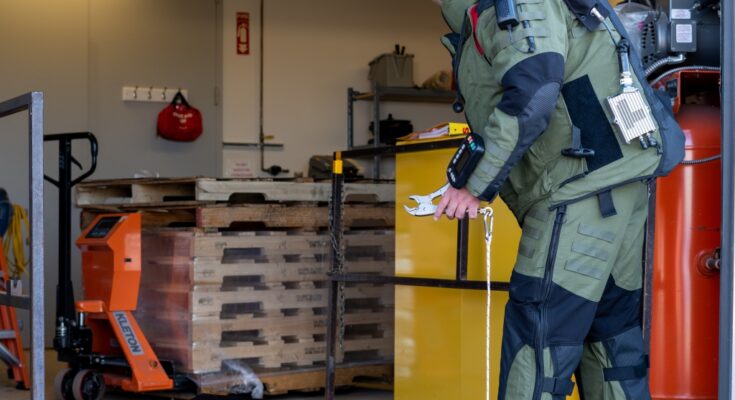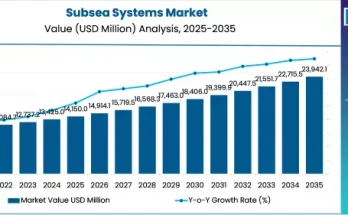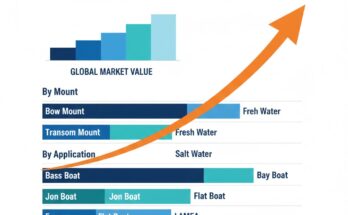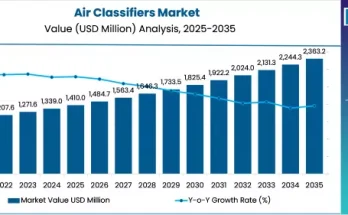As threats from explosive devices persist across civilian and military landscapes, the role of bomb suppression blankets—also known as ballistic blankets—has grown critical. These specialized protective covers are designed to contain blasts, shrapnel, and incendiary effects, playing an essential role in bomb response, law enforcement operations, airport security, and urban safety protocols. Recent market insights from Fact.MR highlight emerging dynamics shaping this critical segment.
What Are Bomb Suppression Blankets?
Bomb suppression blankets are heavy-duty, tightly woven composites that often incorporate aramid fibers like Kevlar, Nomex, or Twaron. Their core function is to cover a suspected explosive device, mitigating blast impact and reducing hazard radius. Their significance is underscored in environments from EOD (explosive ordnance disposal) units and SWAT teams to secure checkpoints at airports and public events. Portability and rapid deployment make them indispensable tools in minimizing secondary damage.
Market Drivers & Dynamics
Rising Global Threats
With evolving threats from terrorism, improvised explosive devices (IEDs), and politically motivated violence, there is heightened demand for solutions that reduce risk during neutralization efforts. Recent commentary on the bomb suppression blanket sector underscores how these security incidents have propelled readiness investments in both public safety and military domains.
Technological Advancements in Materials
The core of effectiveness lies in material innovation. Manufacturers increasingly utilize high-performance aramid composites. These materials balance lightweight flexibility with exceptional strength, enabling blankets to contain blasts without being overly cumbersome. As Dataintelo reports, innovation in Kevlar, Nomex, and Twaron has led to improved blast absorption and fragment containment—key performance enhancements a major growth driver.
Demand for Operational Versatility
Bomb suppression blankets are required across multiple sectors: from military and defense installations, homeland security, commercial buildings, to transportation hubs. Their ease of deployment and compact packaging make them vital for rapid-response protocols. ClickPress has highlighted their portability as a prime reason for adoption in varied operational scenarios .
Market Segments & Applications
By Material Composition
Common blanket materials presently include:
- Kevlar: Famed for impact resistance and light weight
- Nomex: Valued for heat resistance and durability
- Twaron: Offers tensile strength comparable to Kevlar, sometimes more cost-effective
These composites are optionally layered or combined to optimise blast suppression efficacy, reinforcing the need for innovation in textile engineering.
By Application Environment
- Military and Defense: Blanket use integrated into bomb squads, base security, armored vehicles.
- Law Enforcement: Deployed during suspect package investigations, roadside bomb patrols, and urban EOD missions.
- Commercial and Infrastructure: Standard issue at airports, government offices, and public venues for immediate threat response.
The versatility across end‑use scenarios stems from standardized training procedures involving rapid unpackaging and draping, allowing operators to act decisively in threat zones.
By Geographic Demand
Regions leading adoption:
- North America: Poised at the forefront due to advanced defense budgets and entrenched security frameworks.
- Europe: Compliance-driven regimes push public authorities to adopt best-of-breed solutions.
- Asia-Pacific: Rising security concerns coupled with urbanisation and infrastructure growth fuel gradual uptake.
Industry Trends & Competitive Landscape
Fragmented Market with Specialist Providers
The bomb suppression blanket market is diverse, featuring defence-focused manufacturers, ballistic textile firms, and tech-smart composites innovators. Companies range from niche suppliers to larger conglomerates offering integrated protective systems. Dataintelo’s research highlights a number of key global players grouped under point solutions, indicating pronounced industry fragmentation.
Collaboration Across Sectors
Innovative progress often comes from collaboration—government grants underwrite R&D partnerships between public agencies and private firms. These collaborations form the basis for trials in realistic pressure environments, where blankets are tested for parameters like blast energy, fragmentation, and ease of deployment.
Regulation & Standard Evolution
Increasingly stringent testing standards—such as blast resistance ratings and V50 fragmentation thresholds—are being developed and adopted. This compels manufacturers to engineer products that demonstrate measurable blast containment performance.
Challenges & Restraints
Production Costs and Material Availability
High-end aramid fibers remain expensive and the manufacturing process of layering and stitching protective fabrics adds to cost. While price point can limit adoption in smaller security agencies, economies of scale and growing competition may help lower costs over time.
Training Gaps
A suppression blanket is only as effective as its user. Untrained or inadequately trained personnel may deploy it incorrectly. Comprehensive training programs integrated into public safety protocols are essential to avoid false confidence in blanket performance.
Market Penetration Barriers
In regions with limited security funding or fewer formal EOD structures, blanket adoption remains low. In such places, cost-effective alternatives or basic containment tools may still rule, slowing market expansion.
Outlook & Future Opportunities
Incremental Growth Ahead
Analysts anticipate a steady rise in global demand as security awareness deepens. A recent report notes the global bomb blast suppression blanket segment is poised for substantive growth, driven by the precautionary policies of public and private institutions.
Product Innovation on the Horizon
Next-gen blankets under development include those with embedded sensors. These may detect blast wave propagation or structural damage, providing feedback to EOD teams. Integration with robotics and drone systems—where blankets can be placed or retrieved without risking personnel—marks a frontier of innovation.
Service-Oriented Integrations
Bundling blankets with maintenance services, periodic testing, and experiential training boosts recurring revenue for manufacturers and strengthens market trust. This shift aligns with a broader trend toward bundled solutions rather than standalone commodities.
Recommendations for Industry Stakeholders
- Manufacturers: Invest in lightweight and flexible composite technologies that meet evolving blast performance standards. Prioritize standardised testing and certifications.
- Security Agencies: Embody blanket usage within standard operating procedures and conduct regular drills focusing on swift, correct deployment.
- Policy Makers: Encourage public-private research on affordable blanket production and establish regional blast containment standards to foster interoperability.
- Training Providers: Create immersive training modules—potentially VR-assisted—where operators deploy blankets under timed drills or real-life simulations.
- Suppliers & Distributors: Educate clientele on importance of maintenance, readiness audits, and lifecycle support—a shift toward advisory rather than transactional selling.
Use Cases in Action
Airport Security
With increasingly sophisticated threats at transport hubs, many airports now require suppression blankets as part of incident kits. Their deployment during suspicious-package investigations helps isolate potential hazards and protects passengers during evacuation.
Urban Law Enforcement
Metropolitan SWAT teams and EOD squads routinely utilize these blankets during bomb threats in high-traffic zones. The ability to rapidly shield dangerous parcels can make evacuation zones smaller and response times quicker.
Military Operations
Tactical units rely on suppression blankets when clearing IEDs or during perimeter sweeps. These lightweight blankets are easily packed into vehicles or backpacks and can be deployed by a single troop.
Conclusion
The bomb suppression blanket market is a growth story anchored in global security concerns, material science advancements, and evolving operational tactics. While market penetration remains uneven geographically, mature markets in North America and Europe lead adoption, with Asia-Pacific following suit.
The evolving threat spectrum—spanning from homegrown devices to militarised explosive threats—combined with innovation in lightweight composites, resets market expectations. Strategic partnerships among manufacturers, governments and first responder units enhance product capability and readiness levels.
Bomb suppression blankets won’t stop every threat—but when deployed correctly, they offer crucial containment capability that can save lives, reduce collateral harm, and uphold public confidence in safety protocols. As the landscape of explosive risk transforms, so too will the blankets designed to tame them. Stakeholders who align with standards, integrate effective training, and invest in cutting-edge materials will shape a more secure tomorrow.
Check out More Related Studies Published by Fact.MR:
Consumer and Office Robot Market
https://www.factmr.com/report/2793/consumer-and-office-robot-market
Fuel Grinder Market
https://www.factmr.com/report/2808/fuel-grinder-market
Plow Folding System Market
https://www.factmr.com/report/2847/plow-folding-system-market
Tree Transplanters Market
https://www.factmr.com/report/2885/tree-transplanters-market
Blanking Machine Market
https://www.factmr.com/report/3040/blanking-machine-market



